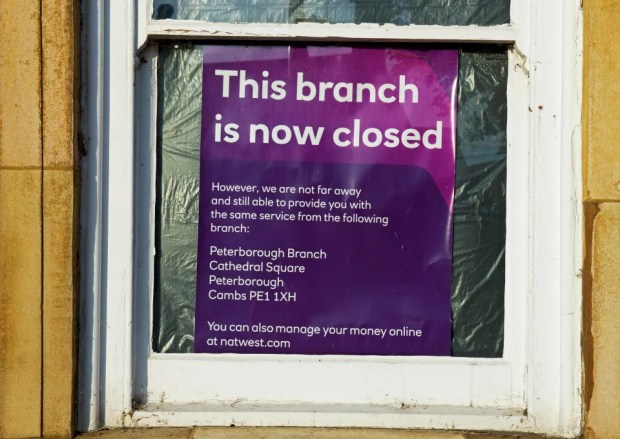
The UK has an election in July. The likely winner is the left-of-centre Labour Party, after 14 years of the righter wing Conservative Party. The new leader will be Sir Kier Starmer, a guy described as a “political robot”. Nevertheless, his party has created a burning platform to win votes. No, it’s not “stop the boats” (get rid of migrants); it’s “stop the bank branch closures”, a sure-fire vote winner!
GBN: The Labour Party has pledged to create 350 banking hubs to offset the recent trend of branch closures and “breathe life into Britain's high streets”.
This is Money: The hubs are shared centres where customers of most major banks can go to withdraw and deposit cash and get banking support and advice. They were created in response to widespread branch closures, with 6,000 bank branches having shut their doors since 2015.
Money Week: It would do so by giving the Financial Conduct Authority (FCA) new powers, and by reforming the criteria for where hubs can be created.
Banking hubs make sense for small businesses and consumers who want over the counter service. For example John Howells, Link chief executive, said: “banking hubs are proving a very popular way of providing access to cash and basic banking for consumers and businesses who need to use a high street branch”.
Yep.
Interestingly, I’ve predicted the death of branch-based banking, cash and card payments and more for decades. We are finally there, and then we revive it with hub-based banking and make that a political position.
Funnily enough, I’ve always said that as a “services” business (financial services), you will always need human contact. Whether that’s by phone or in a building, the human contact is a key differentiation in finance. If I’m worried about my balance, I want somewhere to go to say: SHOW ME THE MONEY!!!!!
It’s just that I don’t need thousands of places to shout that message. Just one. Nearby. Within driving distance or a bus ride.
That’s the reason why I’ve predicted branches would close for years. Back in the 1980s, Britain had over 20,000 bank branches. Today, we have just over 5,000. That seems about right. In fact, I reckon there’s still room for more closures.
What are bank branches needed for? Serving old age pensioners and small businesses that deal in cash and coins? The pensioners will die and the small business that uses cash will go out of business. End of story.
But, core point: a bank may still need physical outlets, but they have to ask themselves why?
This was answered for me by Che! Banca in Italy, who told me that branches are their marketing investment. Where they have branches, they get three times more assets invested than where they don’t. That makes sense.
Meantime, during an election campaign, the leading party dictating that they will promise to open more banking hubs to deal with banks making branch closures is an interesting angle. Is it a vote winner? You tell me.
Chris M Skinner
Chris Skinner is best known as an independent commentator on the financial markets through his blog, TheFinanser.com, as author of the bestselling book Digital Bank, and Chair of the European networking forum the Financial Services Club. He has been voted one of the most influential people in banking by The Financial Brand (as well as one of the best blogs), a FinTech Titan (Next Bank), one of the Fintech Leaders you need to follow (City AM, Deluxe and Jax Finance), as well as one of the Top 40 most influential people in financial technology by the Wall Street Journal's Financial News. To learn more click here...


